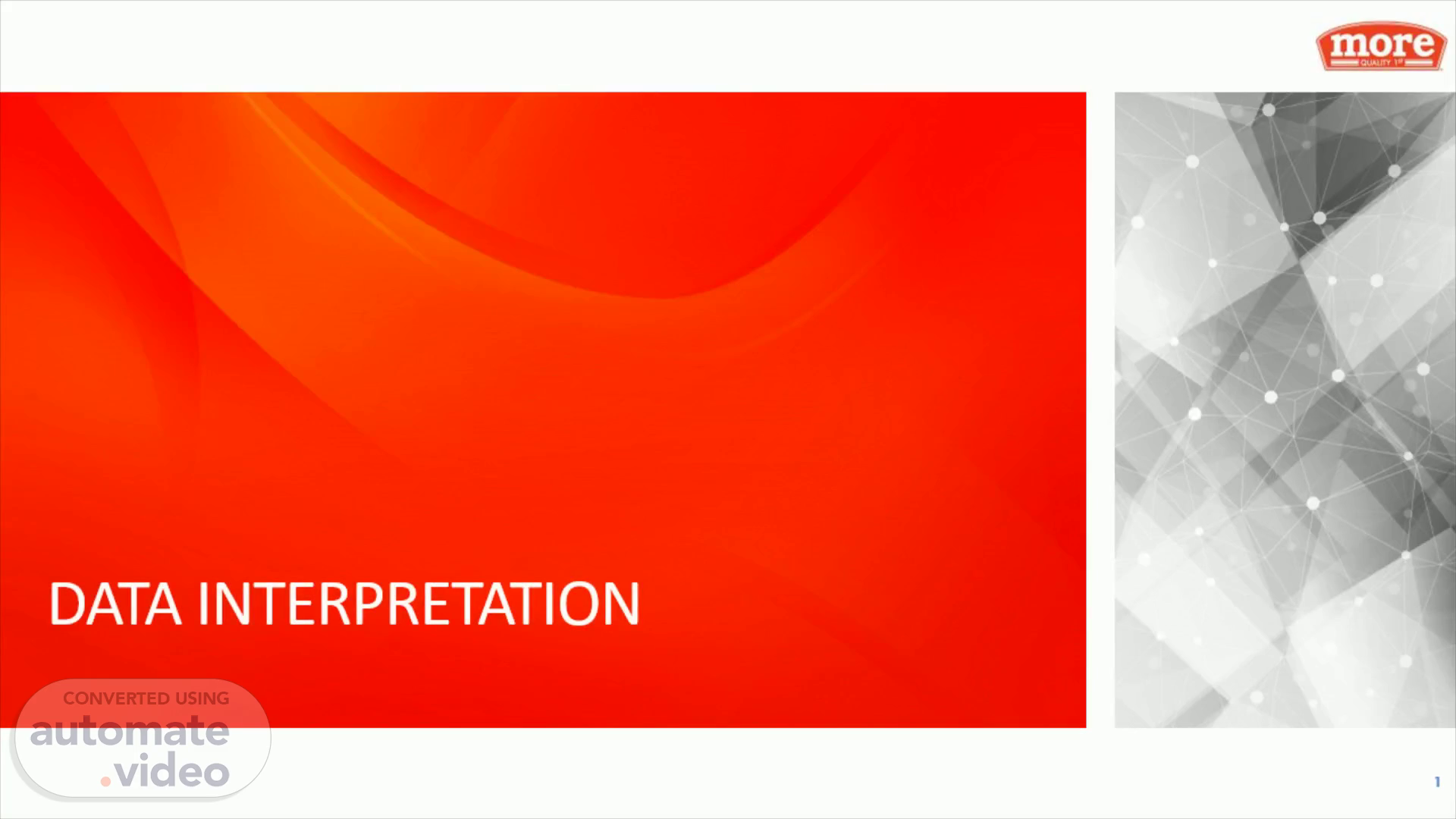Scene 1 (0s)
[Audio] Data Interpretation. DATA INTERPRETATION.
Scene 2 (6s)
[Audio] Data interpretation is the process of making sense of the information. It allows us to ask: What does this information tell me about the program? Here, you see a flow chart of the steps involved in interpreting data … 1. Relevance of finding 2. Reasons for finding 3. Consider other data 4. Conduct further research.
Scene 3 (40s)
[Audio] We start by wanting to know the relevance of our findings. Seeking the relevance of a finding is to: Adding meaning to information by making connections and comparisons and exploring causes and consequences.
Scene 4 (56s)
[Audio] When interpreting data and seeking the relevance of our findings, we may ask these questions: Does the indicator meet the target? How far from the target is it? How does it compare (to other time periods, other facilities)? Are there any extreme highs and lows in the data? Asking these questions will help you to put the data in the context of your program..
Scene 5 (1m 24s)
[Audio] When seeking potential reasons for the finding, we often will need additional information that will put our findings into the context of the program. Supplementing the findings with expert opinion is a good way to do this. For example, talk to others with knowledge of the program or target population, who have in-depth knowledge about the subject matter, and get their opinions about possible causes. For example, if your data show that you have not met your targets, you may want to know if: the community is aware of the service? To answer this, you could talk to community leaders or other providers to get their opinions. Sometimes ad hoc conversations with experts are insufficient. To get a more accurate explanation of your findings, you often will have to consider other data resources..
Scene 6 (2m 17s)
[Audio] Let's go back to the finding of 'the program has not met its annual target'. Can we understand why this is happening by looking at other program indicators? You may want to calculate the nurse-to-client ratio to determine if the facility is sufficiently staffed to meet the client load. You also may want to review commodity data with client load to determine if there are shortages of commodities. While it is important to consider other indicators in your analysis, remember – descriptive statistics do not show causality. In these cases, look at other data sources..
Scene 7 (2m 56s)
[Audio] Other data sources include: Situation analyses Demographic and health surveys Performance improvement data.
Scene 8 (3m 8s)
[Audio] Once you review additional data, it may become apparent that these data are not sufficient to explain the reasons for your findings – that a data gap exists. In these instances, it may be necessary to conduct further research. The types of research designs that are applied will depend on the questions that need to be answered, and of course, will be tempered by the feasibility and expense involved with obtaining the new data..
Scene 9 (3m 35s)
[Audio] THANK YOU Happy learning. THANK YOU!. 9.
